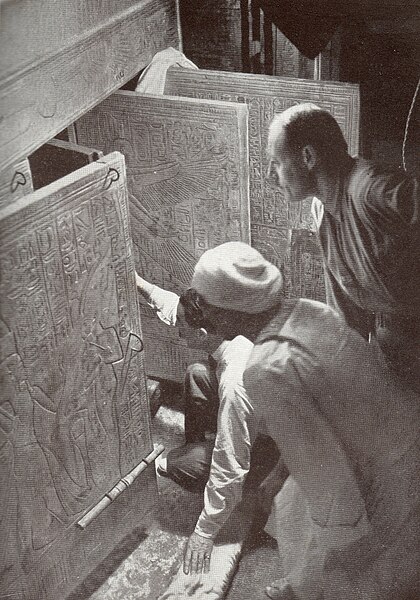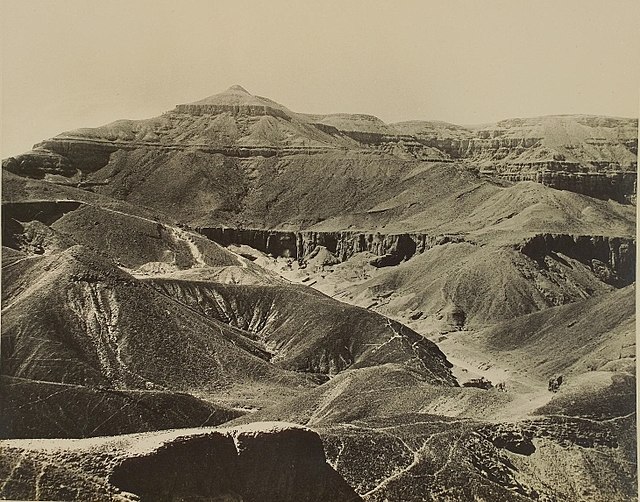Exhibitions of artifacts from the tomb of Tutankhamun
Exhibitions of artifacts from the tomb of Tutankhamun have been held at museums in several countries, notably the United Kingdom, Soviet Union, United States, Canada, Japan, and France.
The gilded bier from the base of Tutankhamun's sarcophagus
A pectoral belonging to Tutankhamun, representing his prenomen.
One of the golden shrines, now on display in the Egyptian Museum
The iconic burial mask of Tutankhamun was among the most popular pieces in the Treasures of Tutankhamun exhibition.
Discovery of the tomb of Tutankhamun
The tomb of Tutankhamun was discovered in the Valley of the Kings in 1922 by excavators led by the Egyptologist Howard Carter, more than 3,300 years after Tutankhamun's death and burial. Whereas the tombs of most pharaohs were plundered by graverobbers in ancient times, Tutankhamun's tomb was hidden by debris for most of its existence and therefore not extensively robbed. It thus became the first known largely intact royal burial from ancient Egypt.
Howard Carter (squatting), Arthur Callender and an Egyptian workman, looking into the opened shrines enclosing Tutankhamun's sarcophagus in 1924
The Valley of the Kings in 1922. The tomb of Tutankhamun lies near the central path through the valley, at centre right.
Lord Carnarvon at Howard Carter's house in Egypt, c. 1922
View of the southwest corner of the antechamber, with disassembled chariots on the left and furniture on the right. The entrance to the annexe is beneath the funerary bed to the right of centre.








